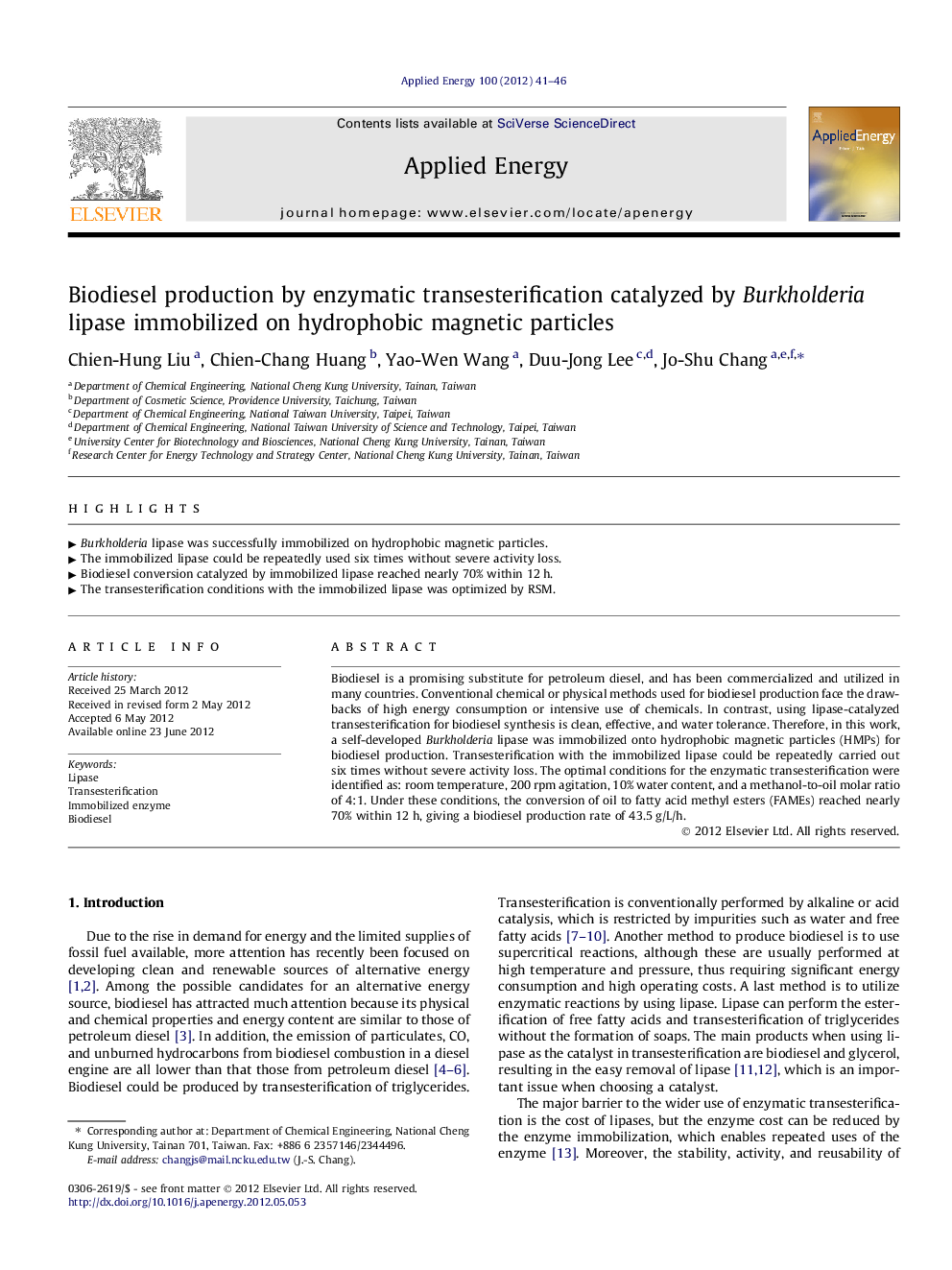| Article ID | Journal | Published Year | Pages | File Type |
|---|---|---|---|---|
| 243145 | Applied Energy | 2012 | 6 Pages |
Biodiesel is a promising substitute for petroleum diesel, and has been commercialized and utilized in many countries. Conventional chemical or physical methods used for biodiesel production face the drawbacks of high energy consumption or intensive use of chemicals. In contrast, using lipase-catalyzed transesterification for biodiesel synthesis is clean, effective, and water tolerance. Therefore, in this work, a self-developed Burkholderia lipase was immobilized onto hydrophobic magnetic particles (HMPs) for biodiesel production. Transesterification with the immobilized lipase could be repeatedly carried out six times without severe activity loss. The optimal conditions for the enzymatic transesterification were identified as: room temperature, 200 rpm agitation, 10% water content, and a methanol-to-oil molar ratio of 4:1. Under these conditions, the conversion of oil to fatty acid methyl esters (FAMEs) reached nearly 70% within 12 h, giving a biodiesel production rate of 43.5 g/L/h.
► Burkholderia lipase was successfully immobilized on hydrophobic magnetic particles. ► The immobilized lipase could be repeatedly used six times without severe activity loss. ► Biodiesel conversion catalyzed by immobilized lipase reached nearly 70% within 12 h. ► The transesterification conditions with the immobilized lipase was optimized by RSM.
